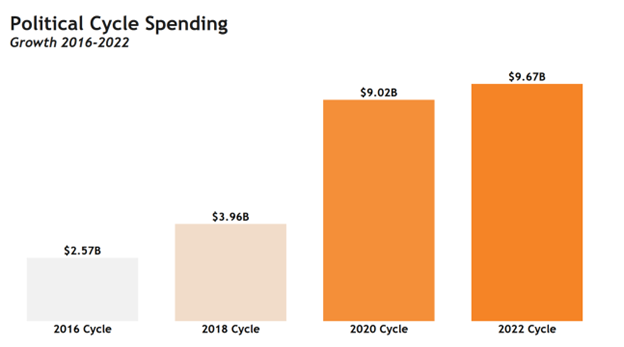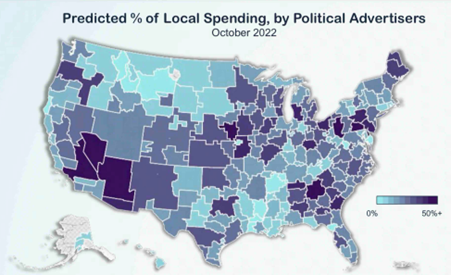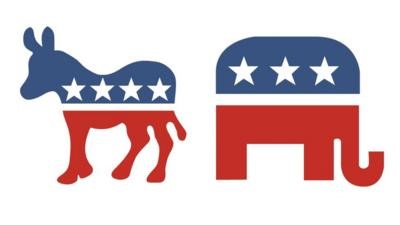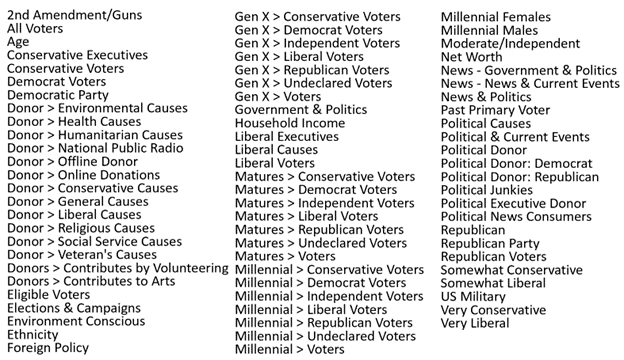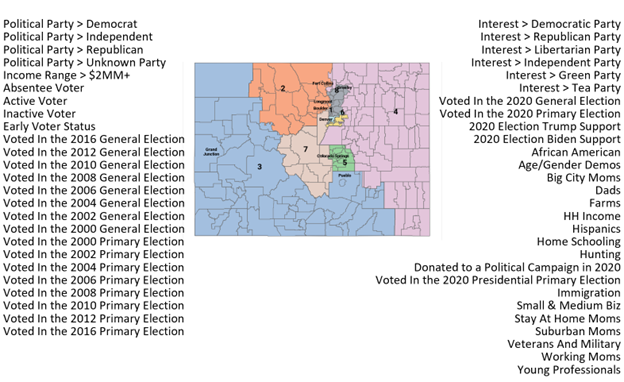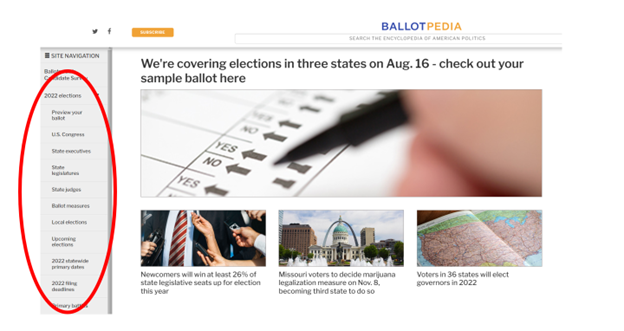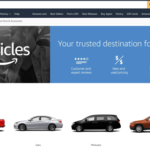Are You Investing in Digital this Political Season?
The “ber” months are approaching quickly and that means cooler weather, reasons to eat a lot of pie, and everyone’s favorite- political season. That’s right, political season is already ramping up and we are seeing and hearing ads for all sorts of political races from local ballots to nationwide races. This year, political ad spending is set to smash records in the midterm elections with $9.7 billion dollars being spent on political ads during the 2022 election season.
Now, chances are that your particular candidate isn’t going to have millions of dollars to spend on a digital campaign, but take a look at your local races like Mayors, Clerk of Courts, County Assessor, District Judges, Prosecuting Attorney, State Representatives for your area’s districts, Family Court Judges, etc. On the local level, there are a lot of different ways you can use digital for political races and get a slice of that political pie.
The map above is broken out into congressional districts and it’s a great illustration showing the predicted percentage of local spending that political advertisers will take up as we march closer to that political window. Anything shaded in dark blue to light purple and then into dark purple means that those areas are predicted to have political spending be as much as 50% of the local ad spend, so this can help give you an idea on how much is going to be spent in your area for political.
Something else that can be helpful when talking to political candidates or campaign managers about how much they are looking to spend is to ask them what the average amount spent per eligible voter is. That number can vary greatly from $5.00 a voter, to more than $100 a voter but the average amount spent per eligible voter is $40.87. When talking with campaign managers or candidates themselves, you can ask them what their win number is, or how many votes that they have calculated that they need to get in order to win. Most will have calculated this number or at the very least looked at the prior election to know what the win number was for that winning candidate, and then you can multiply that by the number spent per eligible voter to get a benchmark on what a budget should be. For example, if we are dealing with a candidate with a win number of 500, their budget with a per eligible voter spend of $40.87 would be $20,435. That sounds like a pretty hefty number, but their opponents are looking at the same numbers they are, so they want to be aggressive!
When it comes to political races, broadcast TV is going to continue to get the elephants share of the spend, but digital ad spending is the next in line with the highest level of ad spend at $697 million dollars being spent. With 43% of voters searching for more information about a candidate after viewing an ad, digital is coming up at the heels of broadcast TV. Broadcast also has some restrictions when it comes to running ads because they don’t have endless amounts of inventory, so this is a great opportunity to talk about different digital offerings, like Over the Top (OTT) for those campaigns getting shut out of broadcast TV due to limited inventory.
OTT is definitely a top product for political and it’s estimated that $1.5 billion will be spent on OTT ads this year, which is surpassing the $1.3 billion that is expected to be spent on Google and Facebook. By using OTT, it is great for that top of funnel awareness to get the candidates name out there, but it also allows you to get more targeted by utilizing Behavioral Targeting, Artificial Intelligence, and Retargeting, and the targeting categories are really great for political:
Another well-known strategy for political is Mobile Conquesting because of the ability to target by some type of database list. Anybody who is running for an office is going to have access to all kinds of database lists either that they have collected, or through their affiliated party. With Mobile Conquesting Address Targeting, they could target voter lists so that we are reaching people that are affiliated with a certain party, or donor lists where we show ads to previous donors and ask them to donate again. With this strategy, we are going to reach 100% of that list and they can use display ads, video ads, and even add in Cross Platform targeting ads where we are reaching people on multiple devices and not just on their mobile device.
Now if the candidate doesn’t have a list to target or just wants to reach a little bit more of a broader audience, we can use Mobile Conquesting with Behavioral Targeting. With this targeting strategy, we can actually target by Congressional District as the geo, and the categories are also pretty specific:
The most common type of political campaigns are those that are running for offices, whether it be local, statewide, or national, but there are other type of political campaigns that you want to keep your eye our for, and those are ballot initiatives. Ballot Initiatives is a means by which citizens may propose to create, amend, or repeal a state law or constitutional provision through collecting petition signatures from a certain minimum number of registered voters. These types of initiatives or campaigns also have advertising budgets. One really good resource to use when looking for theses ballot initiatives is ballotpedia.org. This website lists national elections, state elections, city, county, ballot measures, local elections, etc., and all you have to do is go to the left side and look at ballot measures in your area and you can get an idea for what is being proposed, created, amended, repealed, etc..
Now that you have an idea on who you want to talk to and even some products that you want to talk about, here comes the hard part and it’s getting that meeting. How do you reach out and make yourself stand out compared to all the different types of media that are also trying to get a piece of the political pie? How do you position yourself as an expert? How do you make the candidate or campaign manager want to meet with you instead of someone else? You want to make sure you are using a valid business reason! Ask them if they are looking to target people by their political affiliation, interests, age, income, or voting district, and talk about the products you can do that with such as Video Pre-Roll, Social Mirror, OTT, Native Display, Native Video, or Display ads. Maybe reaching a large Hispanic population is something that they are interested in. If so, you have an entire presentation deck tailored for that. Talk about all the different ways that they can use a database that they might have with Native Email Matching, Facebook Custom Audience Matching and Lookalike, or Mobile Conquesting Address Targeting and Address Retargeting.
Once you do get that meeting, make sure you are doing your homework ahead of time. There is the potential for a lot of money with political campaigns, so you want to be prepared. During that first meeting, have an idea of who their target voter is, but clarify it with the candidate or campaign manager. Are they looking for certain ages or genders, is there a certain income they want to target or certain interests. If it is a Democratic candidate, be sure to highlight some of those categories that they will be interested in. If there is a certain ballot initiative, see what categories would be the best fit for that initiative. Ask them what the geo is that they want to focus on. If it’s a county race, you will want to make sure you are hitting all the zip codes in that county. Also, check out their Social Media accounts to not only see what accounts they have, but also get a feel for what they are about, their style, where they’re from, and even their values so that you have an idea of who you are going to meeting with and representing. Don’t forget to use your Political Capabilities Presentation deck that we’ve created for you in your shared drive.
Maybe if you’re lucky, you’ll even find out what kind of pie they like.

